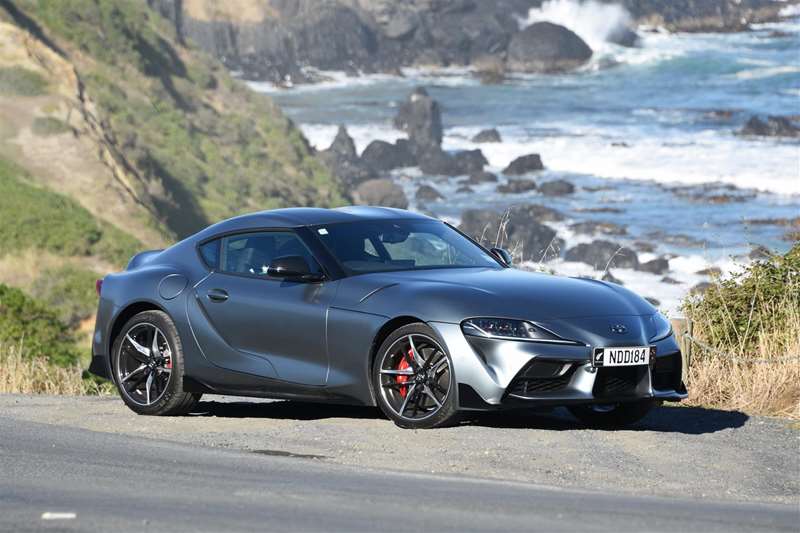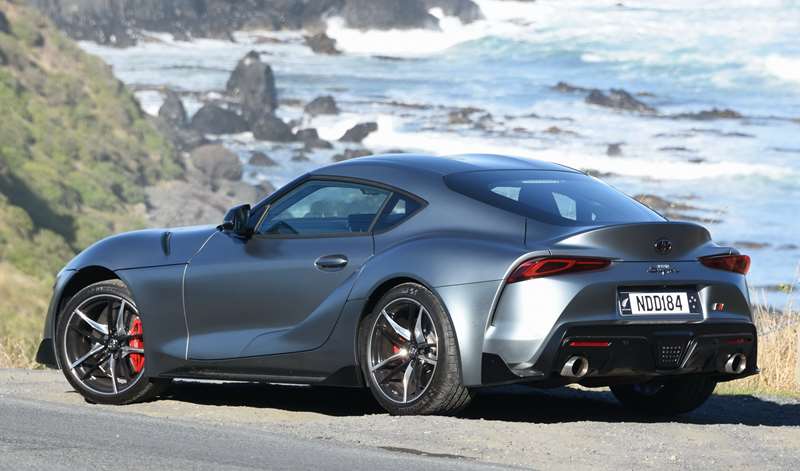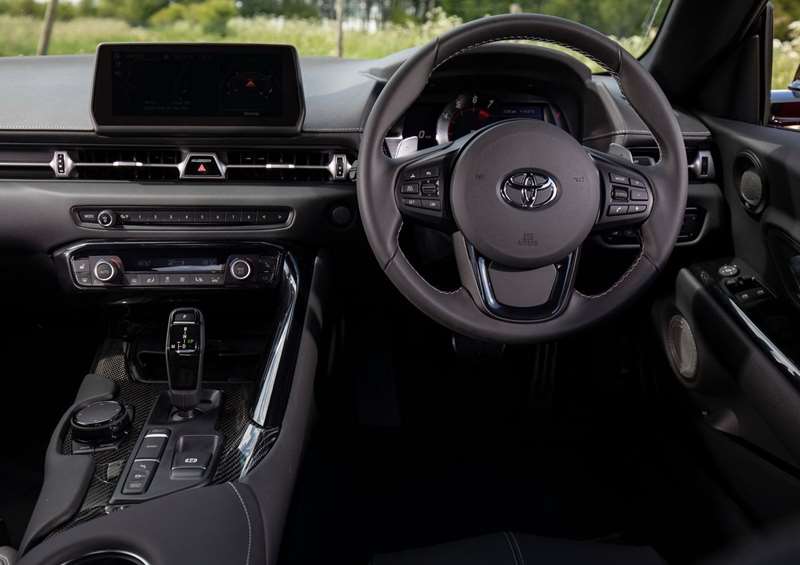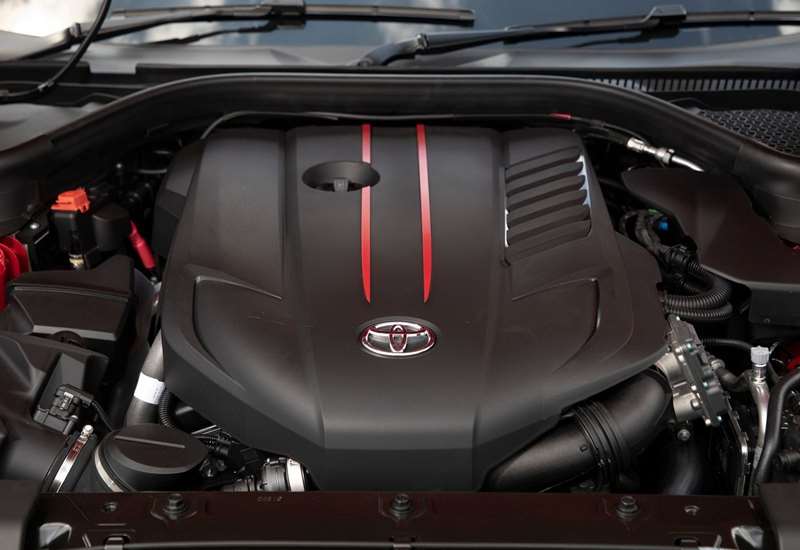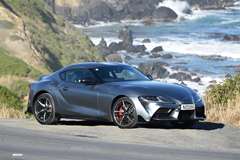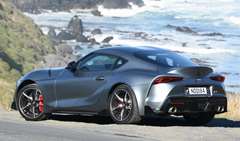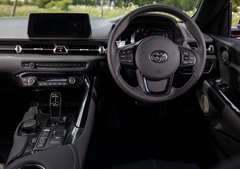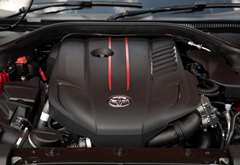After a long wait, David Thomson finally gets to slip behind the wheel of the reborn Toyota Supra on Otago roads.
What’s new?
Regular readers may already know the backstory of Toyota’s quest to reimagine its iconic Supra sports car for the modern era, but for those who are not familiar, here’s the condensed version.
The first run of Supra concluded back in 2002, 24 years and four generations after the original model first appeared in Japan. While the look evolved, Supra was always a two-door, two-seat coupe, with export models powered by a straight-six engine.
Serious planning for a new Supra began close to 10 years ago, when Toyota president Akio Toyoda instructed his engineers to begin working on the design that made its public debut as the FT-1 concept car in 2014.
Without a suitable straight-six engine, Toyota turned to BMW.
The turbocharged 3.0-litre motor that powers the new Supra is a 250kW/500Nm version of the B58 engine that has been extensively used by BMW since 2015. But Toyota hasn’t only taken a BMW engine, it’s borrowed a BMW eight-speed automatic gearbox and electronic diff, popped the Supra on the same underlying platform BMW uses for the latest Z4 roadster, and adopted a fair chunk of interior and electronics from the Z4, too.
Purists from both sides of the fence may turn up their noses, but the reality is that this sharing is what has made the new Supra a viable proposition.
Oh, and another small detail, the new Supra’s not built in Japan, nor for that matter at any one of Toyota’s many factories in other parts of the world. It’s built in Austria, at the Canadian-owned Magna-Steyr factory in Graz alongside (and you probably guessed this) the BMW Z4, (and you probably didn’t guess this) the Mercedes G-Class, Jaguar E-Pace and Jaguar I-Pace.
There’s actually a four-cylinder Supra as well, but we only see the six-cylinder version here. It’s badged the GR Supra to acknowledge the link to Toyota’s high performance arm — Gazoo Racing — and comes with a $98,990 price tag.
What’s it like to look at?
the new Supra coupe has nothing in common with the current BMW Z4 convertible in terms of looks. Rather, it stays remarkably faithful to the very bold look of the FT-1 concept car, and for that reason is better looking than the Z4.
Its proportions are classic sports coupe: a long bonnet, chopped-off tail and a wide, planted stance on the road. But it’s the detailing — the aggressively creased nose, the double-bubble roof, sweeping curves and bulges along the flanks, a truly wicked rear end — that really attracts attention. Oh, and those red brake callipers and big brake discs peeping out from 19-inch alloys shod with 255/35 tyres up front, and with 275/35 on the back.
Nitro yellow and renaissance red are the most obviously eye-catching colours on offer, but the test car, with its matte-finish Phantom Grey paint scheme, made quite a statement, too.
What’s it like inside ?
It’s a pure two-seater, with a 290-litre boot accessed by a hatchback-style boot that, somewhat oddly, has neither an external release button nor an obvious handle or recess to lift it.
Separated by the transmission tunnel, the seats are set low and trimmed in a mix of artificial leather and suede. Both have adjustable side bolsters, and are heated and fully power-operated.
Toyota has not mimicked the BMW Z4 in the dash design, but a lot of its switchgear — the iDrive multimedia system, the steering wheel (despite a badge that suggests otherwise) and door handles — are pure BMW. That’s not necessarily bad news in terms of quality feel, but the limited customisation stands in the way of the cabin having a completely distinctive Toyota feel.
If you are wondering why Toyota did not do more in this regard, it has much to do with the complexity of modern electronic systems and their accompanying interfaces.
The systems that run its BMW-source mechanicals are designed to operate through BMW’s iDrive interface which, in turn, is operated via a set of standard display screens, and so on.
To give an example, the Supra’s iDrive system has a Toyota skin at start-up, and Toyota-specific warning messages but otherwise uses the same fonts and menus as BMW.
Apparently changing the warning messages alone took 20,000 lines of computer code.
What comes as standard?
Satellite navigation with speed limit recognition, a 12-speaker premium sound system with 20Gb internal storage, dual zone climate control, wireless phone charging, smartphone mirroring and a head-up display are all provided as standard.
The active safety array includes auto-dipping LED headlights, active cornering assist, active cruise control with stop-go, driver alert assistance and rear cross traffic alert.
Blind spot monitoring, land departure warning, and front collision assist with automated emergency braking also feature.
What’s it like to drive?
First impressions are of snug and supportive seats, well-placed key controls and instruments and a steering wheel that could have been sportier. The gearshift falls nicely to hand, although the paddle shifts controls on the steering wheel are obviously going to be more important for those occasions when the driver takes control of the transmission.
Driving around town is fuss-free: low-speed ride quality is very good for a car of this ilk; the active safe equipment compensates for poor visibility to the rear and rear three-quarter angles; the engine’s pleasing straight-six burble makes its presence felt even at quite modest throttle openings, and gearshifts are smooth and unobtrusive.
The highway cruise is straightforward, with coarse-chip road rumble a minus, but ample pep for snappy overtaking a big positive.
Really though, this is car to enjoy away from main routes, down stretches of tarmac that are lightly trafficked and feature plenty of twists and turns.
Fun is maximised by using a trio of buttons just aft of the gearshift to select sport mode (placing the engine, transmission, steering and damping into more aggressive calibrations), limit the intervention of the car’s traction control and stability systems, and deactivate its quite sensitive lane-keeping assist.
Pleasurable as it is in normal mode, the engine gains sharpness in sport mode, along with subtle exhaust crackle-and-pop.
Accelerating hard from rest and using the launch control option, the Supra reaches 100kmh in 4.3 secs.
However there’s more fun to be had making use of the vehicle’s stonking in-gear performance, enabled in large measure by the engine’s maximum 500Nm of torque being available all the way from 1600 to 4500rpm.
The chassis and steering gain additional crispness in sport setting, too, making it easier for the keen driver to savour the benefits of rear-drive dynamic feel and 50:50 weight distribution, both of which are a relative rarity in this day and age.
On test, I was particularly impressed by the high levels of grip and neutral balance under hard cornering. Understeer is notable only by its absence, there is ample on-throttle adjustability, and it is a constant delight to be driving a performance car in which the steering is uncontaminated by the front wheels having to handle power delivery.
Accepting that the new Supra has a chassis and suspension set-up is that generally very engaging, there are times when the front end of the car doesn’t fully communicate how much grip it can provide. This along with the conventional automatic transmission, occasionally takes the edge off driver involvement, which is in all other respects exemplary.
Verdict
The fact that Toyota joined forces with BMW to produce the Supra should in no way diminish the boldness of vision and excellence in execution that this vehicle represents.
It’s a highly desirable car, not only because it is gorgeous to look at and engaging to drive, but because as we move to an electrically dominated motoring future, this Supra will almost certainly be the last of its kind.
PHOTOS: DAVID THOMSON
